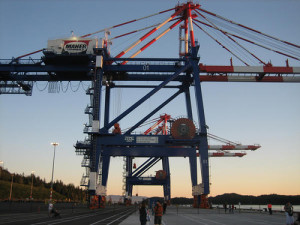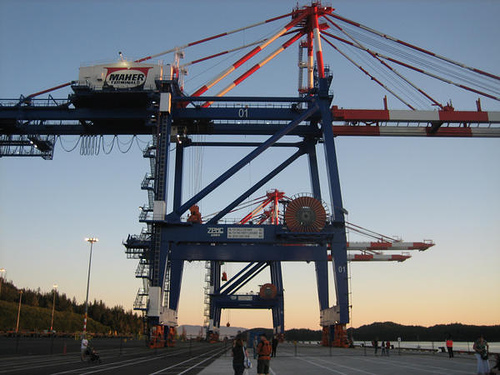 Ocean volumes rose slightly in August but this failed to lift shippers and forwarders’ outlook for an overall demand slowdown over the rest of the year, according to the Stifel Logistics Confidence Index released this month.
Ocean volumes rose slightly in August but this failed to lift shippers and forwarders’ outlook for an overall demand slowdown over the rest of the year, according to the Stifel Logistics Confidence Index released this month.
This as the monthly index that measures air and ocean freight activity across several European-based trade lanes fell for a third consecutive month in August to 54.1, said the report. It further said the first eight months of 2015 have been marked by general decline.
“Indeed, not only is the Index now at its lowest point of the year so far; fierce competition, volatility and overcapacity have all taken their toll and driven the Index to its lowest point since September 2013,” it added.
At the same time, the six-month outlook fell 3 points to bring general expectations down to 56.9, its lowest point since January 2013.
The index showed an easing in demand, too, although the fall was slighter, resulting in a decline of 1.8 points to a mark of 51.3. While airfreight volume slowed, seafreight achieved gains over July’s score, arresting the pace of decline.
By sector, airfreight volumes in June indicated continued slowing tonnage growth. Weak global growth and declining trade activity saw volumes increase at a rate of just 1.2% for the month, a margin barely enough to repel claims of stagnation.
As a result, the Logistics Situation Index for airfreight demand fell 4.1 points to 51.3 in August, its lowest point of the year.
No individual lane saw an increase, but it was lanes out of Europe that performed most poorly. A fall of 7.2 points saw the Europe-to-Asia lane record a score of 48.4 on the index, while the Europe-to-U.S. lane lost 5.6 points and fell to 57.8 as a result. A loss of 2.4 points saw the U.S.-to-Europe lane fall back below the neutral 50 mark to 48.3, as the Asia-to-Europe lane showed a drop of 1.3 points to 50.6.
Expectations for airfreight to repeat last year’s strong finish have been dashed with the Logistics Expectation Index shedding 3.2 points to a mark of 57.3.
The Asia-to-Europe lane led the decline with a fall of 4.5 points to 58.2, while the reverse Europe-to-Asia lane recorded a decline of 3.7 points to a six-month low of 55.8. The U.S.-to-Europe lane lost 3.1 points as it hit 55.1 in August. Although the Europe-to-U.S. lane fell 1.2 points to 60.1 for the year, its lowest mark since October 2014, there is still some optimism to be found in its year-on-year performance which places it 7.7 points ahead of August 2014.
As for seafreight, a 0.5 point rise in the Logistics Situation Index provided a positive note in August as three of the four lanes examined recorded growth.
Leading the way was the Asia-to-Europe lane which rose 3.4 points to 56.4. The U.S.-to-Europe lane also gained 3 points, but at 47.8, conditions undoubtedly remain challenging. The Europe-to-Asia lane added 0.9 points to reach 51 and a second consecutive month above the neutral 50 mark.
But the Europe-to-U.S. lane declined sharply, falling 5.4 points to 48.5, a contraction for the first time since March 2014. The strength of the U.S. dollar saw exports from North Europe to North America grow by 8.4% over the first five months of 2015, but significant capacity increases on the lane during that period threaten to outstrip demand.
August’s familiar pattern of across-the-board declines returned in the Logistics Expectation Index for seafreight as 2.7 points were lost and a score of 56.4 recorded. Overcapacity on the Europe-to-U.S. lane appears to be a concern over the remaining months of 2015 as a fall of 3.4 points saw the index for the lane decline to 58.1. Following a fall of 3.3 points, the Asia-to-Europe lane also saw a score of 58.1 recorded for August. The U.S.-to-Europe lane fell 3 points to 51.1 points, while a fall of 1.1 points meant the Europe to Asia lane finished August at 57.8.
Photo: miguelphotobooth





